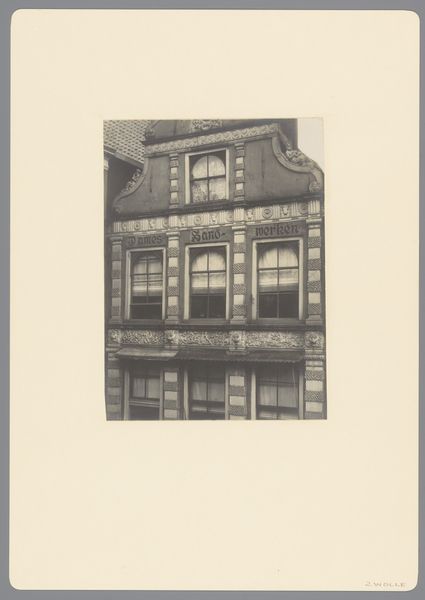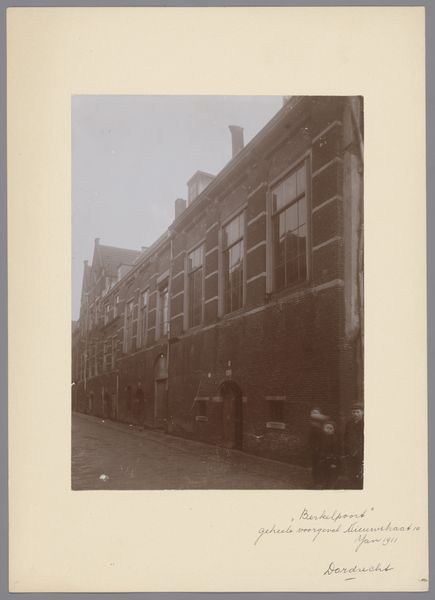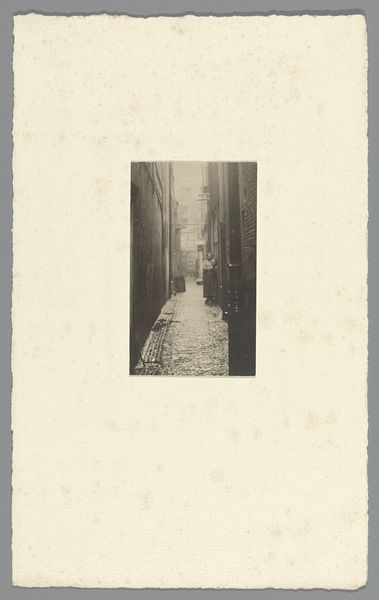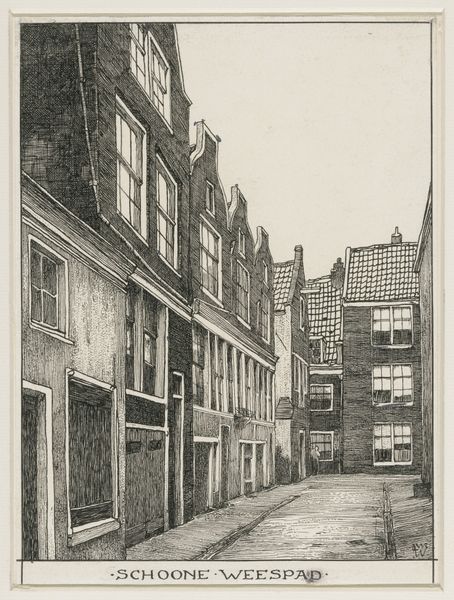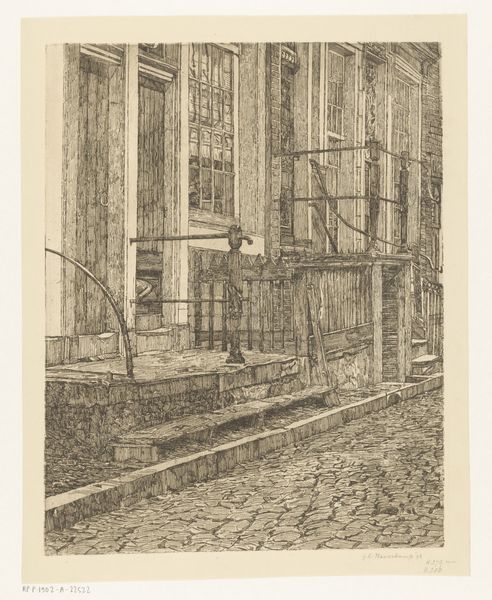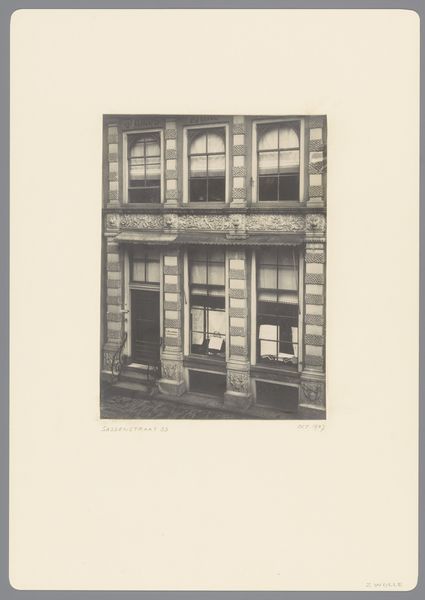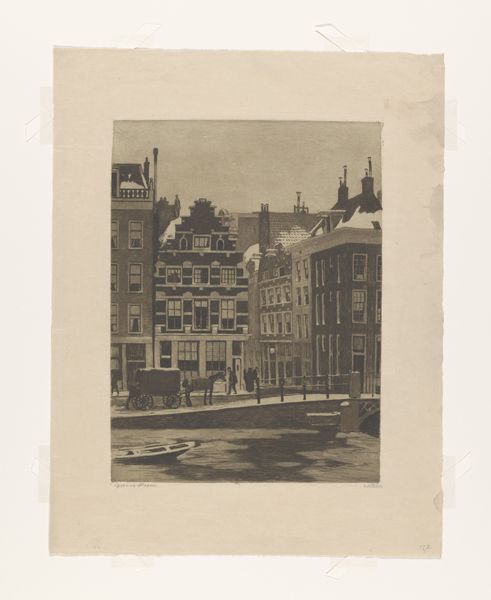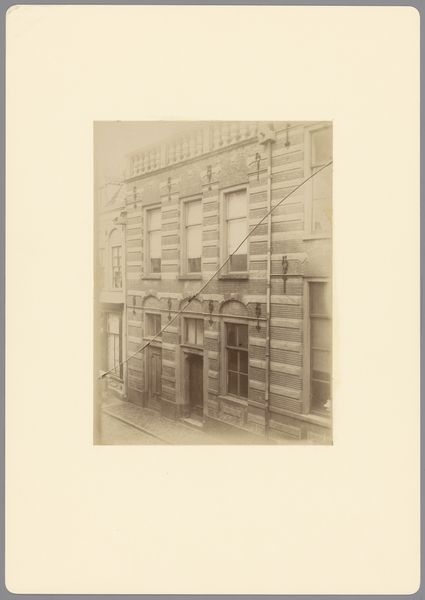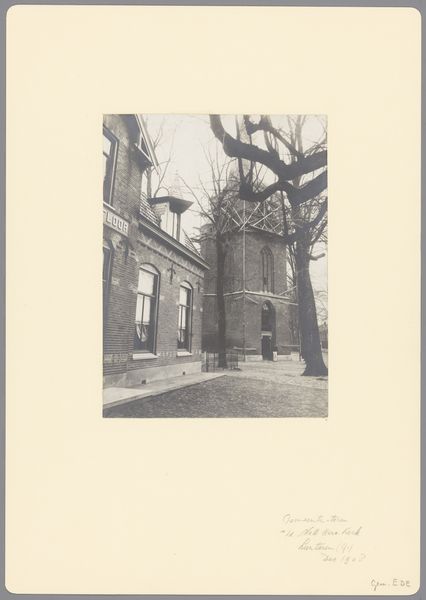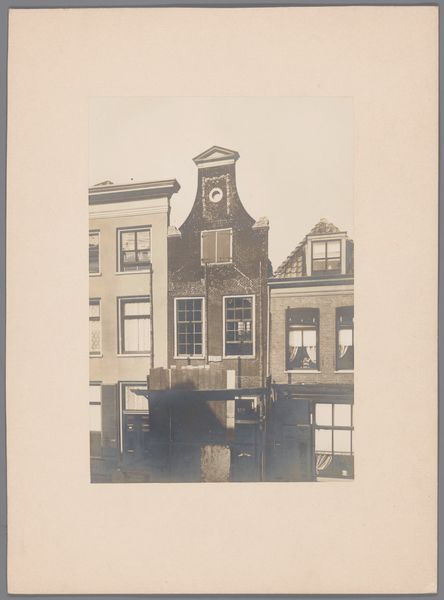
Hoekhuis van de Korte Vijverberg en de Doelenstraat te Den Haag before 1909
0:00
0:00
Dimensions: height 219 mm, width 161 mm
Copyright: Rijks Museum: Open Domain
Curator: Before us, we have an anonymous photograph, taken before 1909, titled “Hoekhuis van de Korte Vijverberg en de Doelenstraat te Den Haag.” It depicts a corner building at the intersection of those streets in The Hague. Editor: My initial impression is of something restrained and somber. The monochromatic palette and the building's rather severe lines give it a very stately, almost mournful presence. Curator: The composition relies heavily on geometric forms—rectangles of windows and walls contrasted by the curves of arches and the cobbled street. The tramlines bisect the image, directing the eye into the depths of the photograph, giving us a sense of perspective that would otherwise be absent. Editor: Those tramlines really ground the image. The building itself speaks to a certain civic pride—the classical motifs like the small sculpture above the door lend an air of established power. Perhaps symbolizing order and reason? Curator: Indeed, one can see echoes of neoclassicism in the facade's organization, especially in the window treatments and the string course detailing. The contrast of brick and light stone adds texture, giving depth to what would otherwise be an overwhelming façade. Editor: Yet there’s a temporary looking wooden fence along the street, that provides a striking visual counterpoint to the architecture. I am struck by the ephemeral juxtaposed against the enduring. This place and this moment is a passing experience in a history of longer durations. Curator: A telling juxtaposition. I observe that there is also no human figure, rendering the building more isolated. It forces us to regard it as pure form, pure architecture and the building becomes, thus, the principal, even sole subject of our attention. Editor: Considering all of that, I still cannot quite shake the mood—a palpable sense of history, of resilience… of enduring presence despite whatever changes time may bring. Curator: An interesting analysis. By attending to both form and historical content, you provide another entry into appreciating the architecture in this frame. Editor: Yes, considering both form and symbolic meaning adds an entry to the architectural experience itself.
Comments
No comments
Be the first to comment and join the conversation on the ultimate creative platform.
